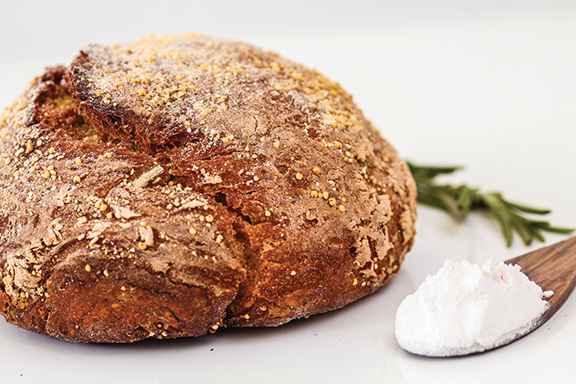[caption id="attachment_16819" align="aligncenter" width="576"] Metro Service
Metro Service
Various incarnations of soda bread are enjoyed around the world, including Ireland.[/caption]
 Metro Service
Metro ServiceVarious incarnations of soda bread are enjoyed around the world, including Ireland.[/caption]
Humble and traditional culinary creation
A number of things are readily associated with Irish culture, especially in proximity to St. Patrick’s Day, which is coming up this Sunday: A particular shade of green, referred to as “Kelly green,” corned beef, potatoes, parades - even enjoying a pint at the pub. One of the cherished traditions of St. Patrick’s Day, and even for everyday Irish cuisine, is whipping up a family recipe for Irish soda bread. As The Society for the Preservation of Irish Soda Bread says, “Sure, make the fancy desserts for St. Patrick’s Day, but save a spot on the table for Irish soda bread to remember how far the Irish have come from the days when it was the only thing on the table to today when our tables are filled with good things to eat and thoughts of the Famine years (An Gorta Mor) are long forgotten.” True Irish soda bread continues today to be an international favorite. While it is enjoyed across Ireland, it’s also widely enjoyed wherever Irish immigrants have established roots and elsewhere. Most of the ingredients necessary to prepare Irish soda bread can already be found in many homes. Irish soda bread gets its name not from a sweetened carbonated drink, but by the leavening agent that is used in place of yeast. Baking soda (bicarbonate of soda) is a common component of quick bread cooking. When the baking soda is mixed with the flour and a soured milk (buttermilk, for example), its chemical qualities produce carbon-dioxide gas bubbles that help give soda bread it’s risen, airy texture. In some recipes, live yogurt, or even stout, are used as the liquid to activate the baking soda. While the Irish adapted the science behind baking soda and have come to be associated with soda-bread origins, the earliest reference to soda ash being used in baking bread is actually credited to the American Indians. Baking soda was not brought to nor discovered in Ireland until the middle of the 19th century. However, it is the Irish who have made soda bread much their own. It tends to be an easy and inexpensive bread to make to feed many and is very versatile. Soda bread in some shape or form is enjoyed by cultures all around the world. From Scotland to Poland to Serbia to Australia, these countries have their own versions of soda bread and their own cooking methods. In honor of St. Patrick and other Christian celebrations, soda bread is traditionally made with a cross shape cut into the top of the dough. Legend has it that people did it for good luck to “let the devil out” while it’s baking, and others say that this last step made it easy to divide the bread into pieces. Soda bread has become synonymous with Irish culture. Enjoyed plain or with some Irish butter, it’s a common component of meals throughout the year, and most especially on St. Patrick’s Day. - Metro Service
S
